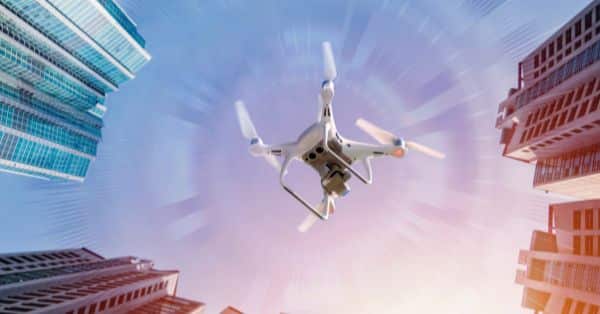Overview of Switzerland’s Largest 5G Drones-as-a-Service Network
Nokia and Swisscom Broadcast have announced a groundbreaking collaboration to deploy the largest 5G Drones-as-a-Service (DaaS) network in Switzerland. This initiative will leverage the Nokia Drone Networks solution, including 300 Drone-in-a-Box units, to enhance safety and operational efficiency for public safety and industrial use cases. This deployment marks a significant step forward in drone automation and beyond visual line of sight (BVLOS) operations, setting a new benchmark for 3GPP technologies in Switzerland.
Navigating Switzerland’s Operational Challenges with Drones
Switzerland’s diverse landscape presents unique challenges for public safety and industrial operations. Ensuring the safety of first responders during emergencies, inspecting hard-to-reach infrastructure, and managing operations in hazardous environments require advanced technological solutions. Traditional methods often involve significant risks and inefficiencies, highlighting the need for innovative approaches like Drones-as-a-Service.
How Nokia and Swisscom’s 5G Drone Network Overcomes Operational Hurdles
Nokia’s Drone Networks solution, integrated with Swisscom Broadcast’s expertise, offers a comprehensive answer to these challenges. The deployment will feature 300 Drone-in-a-Box units, designed to operate autonomously and remotely, providing critical data within minutes of an incident. This setup will enable public safety agencies and industrial users to access drones easily through a service model similar to ride-sharing, enhancing situational awareness and resource optimization.
The solution includes a turnkey Drone-in-a-Box system that integrates drones, docking stations, ground control stations, and payloads with video and thermal cameras. Additionally, it supports APIs for seamless third-party integrations, such as traffic monitoring systems, video management software, and industrial process monitoring systems. This flexibility allows for the easy onboarding of additional applications, such as 3D mapping and asset detection, particularly for customers with Edge computing needs.
Proven Success: Insights from Nokia’s Belgian 5G Drone Network
This initiative follows Nokia’s successful deployment of a similar Drones-as-a-Service network in Belgium with Citymesh. The Belgian project demonstrated the effectiveness of using drone networks for public safety and industrial applications, reinforcing the viability of scaling this solution across Switzerland. The integration of Nokia’s mission-critical industrial edge computing (MXIE) technology further enhances the solution’s capabilities, ensuring reliable and efficient operations.
Why 3GPP Technologies Power Nokia’s 5G Drone Network
The Nokia Drone Networks solution is built on 3GPP technologies to support BVLOS operations, ensuring robust connectivity and compliance with regulatory standards. The system’s integration with Nokia’s MXIE platform architecture allows for advanced computing functions, making it an ideal choice for large-scale industrial and public safety applications. The solution also supports the easy integration of third-party applications, ensuring future-proof operations.
Enhanced Safety and Efficiency through 5G Drones-as-a-Service in Switzerland
The deployment of the Drones-as-a-Service network will significantly enhance worker and public safety across Switzerland. For public safety agencies, the ability to quickly deploy drones during emergencies will improve response times and situational awareness, potentially saving lives. In the industrial sector, drones will reduce the need for workers to operate in hazardous environments, minimizing the risk of accidents.
The collaboration will also drive the advancement of industrial use cases, such as infrastructure inspection and perimeter protection, making operations more efficient and cost-effective. By leveraging Nokia’s advanced edge computing capabilities, the solution offers Swiss enterprises a superior DaaS offering that enhances operational safety and efficiency.
Transforming Public Safety and Industry with Swiss Drones-as-a-Service
The deployment of this 5G Drones-as-a-Service network in Switzerland is poised to set a new standard for public safety and industrial operations. It showcases the potential of private networks and advanced edge computing technologies in transforming industries. The initiative is likely to inspire similar deployments in other countries, further solidifying the role of drones in enhancing safety and efficiency across various sectors.
Nokia’s Leadership in 5G Drone Network Deployment
Nokia plays a pivotal role in this project by providing its state-of-the-art Drone Networks solution, which is integral to the deployment’s success. The company’s expertise in network automation and mission-critical industrial edge computing underpins the network’s reliability and scalability. Nokia’s commitment to advancing public safety and industrial applications through cutting-edge technology is evident in this collaboration.
Raghav Sahgal, President of Cloud and Network Services at Nokia, emphasized the importance of the partnership in establishing a nationwide Drones-as-a-Service network in Switzerland, which will enhance worker and public safety.
Swisscom Broadcast’s Key Contributions to the 5G Drone Network
Swisscom Broadcast, a leader in broadcast and public safety communications, is crucial in this deployment. By integrating its People Density Tool and Drone Operations expertise with Nokia’s hardware and software solutions, Swisscom Broadcast ensures the network’s seamless operation and compliance with regulatory standards. The partnership exemplifies the effective collaboration needed to drive large-scale digital infrastructure projects.
Dominik Müller, CEO at Swisscom Broadcast, expressed confidence in the collaboration, highlighting the integration of Nokia’s industrial-grade hardware and open software architecture as key factors in supporting large-scale projects.
Switzerland’s Drones-as-a-Service Rollout: Current Status and Future Plans
The deployment of the Drones-as-a-Service network across Switzerland is currently in the planning stages, with the rollout expected to be completed in the near future. Nokia and Swisscom Broadcast are working closely with regulatory bodies to ensure compliance with spectrum and aviation safety regulations. The network will soon be available nationwide, offering unparalleled support for public safety and industrial operations.
This collaboration between Nokia and Swisscom Broadcast marks a significant milestone in the deployment of Drones-as-a-Service networks, with far-reaching implications for public safety and industrial operations in Switzerland.
























